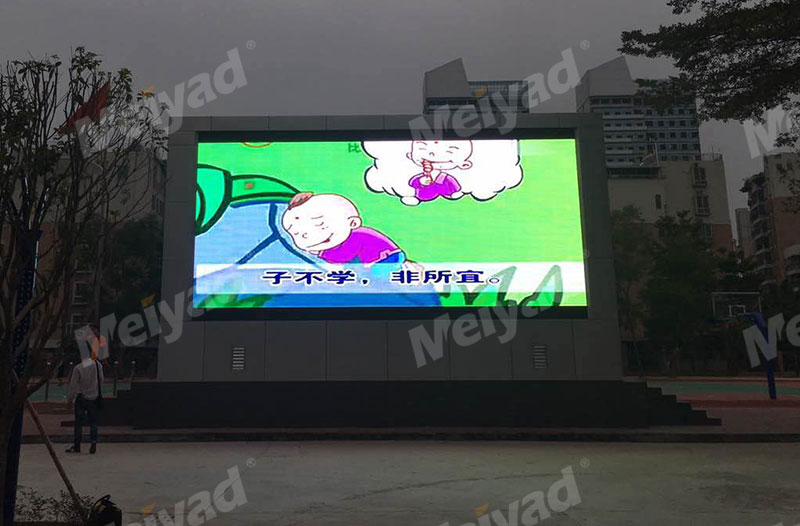+86 135 3053 5995
sales@mydled.comWe use our own and third-party cookies to ensure the proper functioning of the web portal and its complements, perform navigation analysis and show multimedia content. If you continue browsing, you accept the use of this technology. For more information please see our Cookies Policy. Learn more
With the summer is coming, everyone one feel very hot, and the outdoor LED screen is also more prone to heat. High temperature will lead to a rapid increase in the probability of failure of electronic components, resulting in a decrease in the reliability of the LED display. In order to control the temperature of the electronic components inside the led display, so that the led display does not exceed the specified maximum allowable temperature under the working environment, the heat dissipation design of the led display is required. The heat dissipation design of the led display, how to achieve low cost and high quality, is the content of this article.
There are three basic ways of transferring heat: heat conduction, convection, and radiation.

Thermal conduction: Gas heat conduction is the result of collisions between gas molecules when they move irregularly. The heat conduction in the metal conductor is mainly achieved by the movement of free electrons. Thermal conduction in non-conductive solids is achieved by vibration of the lattice structure.The heat conduction mechanism in the liquid mainly depends on the action of elastic waves.
Convection: refers to the heat transfer process caused by the relative displacement between various parts of the fluid. Convection only occurs in the fluid and necessarily accompanied by thermal conduction. The heat exchange process that occurs when fluid flows over the surface of an object is called convective heat transfer. The convection caused by the difference in density of the various parts of the cold and hot fluid is called natural convection. If the motion of the fluid is caused by an external force (fan, etc.), it is called forced convection.
Radiation: The process by which an object transmits its ability in the form of electromagnetic waves is called thermal radiation. Radiant energy transfers energy in a vacuum and has a conversion in the form of energy, that is, thermal energy is converted into radiant energy and radiant energy is converted into thermal energy.
When selecting the heat dissipation method, the following factors should be considered: heat flow density, volume power density, total power consumption, surface area, volume, working environment conditions (temperature, humidity, air pressure, dust, etc.) of the LED display screen.
According to the heat transfer mechanism, there are heat dissipation methods of natural cooling, forced air cooling, direct liquid cooling, evaporative cooling, thermoelectric cooling, heat pipe heat transfer and so on.
LED screen heat dissipation design method
The heat exchange area between the heating electronic components and the cold air, the temperature difference between the heating electronic components and the cold air directly affects the heat dissipation effect. This involves the design of the air volume into the led display cabinet and the design of the air duct. When designing the ventilation duct, try to use straight pipeline to transport air to avoid the use of sharply bent and curved pipelines. Ventilation ducts should avoid sudden expansion or sudden contraction. The extended opening angle should not exceed 20°, and the shrinking taper angle should not exceed 60°. Ventilation ducts should be sealed as much as possible, and all splice should follow the direction of flow.
There are several points to note when designing the LED display cabinet:
The venting holes should be placed close to the upper side of the cabinet. The air inlet should be placed on the underside of the cabinet, but not too low to prevent dirt and water from entering the cabinet installed on the ground.
Designing should be benefit that natural convection helps to force convection. Air should circulate from the bottom to up of the cabinet, and a dedicated air inlet or vent should be used. Cooling air should flow through the hot electronic components while preventing short-circuiting of the airflow. A filter screen should be provided at the air inlet and outlet to prevent debris from entering the cabinet.
when designing we are sure to keep the air intake away from exhaust and avoid reusing cooling air.
To ensure that the direction of the heat sink cogging is parallel to the wind direction, the heat sink slot cannot block the air path.
The fan is installed in the system. Due to structural constraints, the air inlet and outlet are often blocked and the performance curve changes. According to practical experience, the inlet and outlet of the fan should preferably be 40mm away from the barrier. If there is space limitation, it should be at least 20mm.